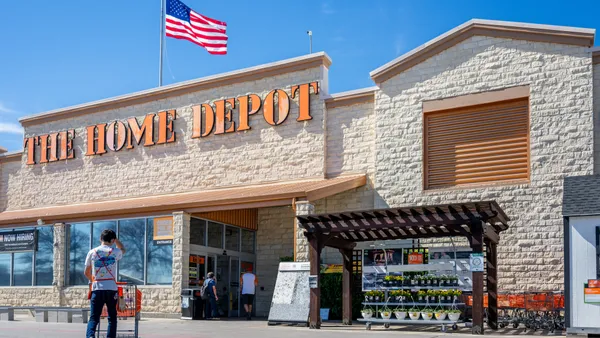Retailers know that increasing online sales is essential to their growth. (It’s projected that by 2026, e-commerce will make up nearly a quarter of total global retail sales.) But certain pain points and challenges in the online retail space hold back retailers’ potential to sell more products.
For one, customer acquisition costs are going up. With a full 57% of retailers reporting that rising customer acquisition costs were a threat to their 2022 sales goals, it’s clear that retailers need to drive up conversions and average order values (AOVs) — and reduce abandoned carts — in order for their investments in customer acquisition to deliver more returns.
Secondly, growing online retail sales by meeting consumers’ needs requires more agility than ever — and retailers’ online business processes aren’t designed to work that way. The market changes fast, but product catalogs can take a long time to change in traditional retail business models.
Reliable growth strategies can be risky
“When you think about growth strategies, no one would debate the fact that if you can meet consumer demand by spinning up new products to be sold to customers that want them, that is a good thing,” says Keith George, CEO and co-founder of Cortina and a former executive at Gilt. “But there are limitations to doing that, as it takes a lot of time and money.”
The time and money involved in spinning up new products for sale starts with research and development (R&D) and continues through warehousing and inventory management.
“There are costs associated with drop-shipping, but consider the costs that go into new products. You design the products, do R&D and market research,” says George. “And then when you get something manufactured, it comes in a large order and you're stuck with the inventory. You have to pay for it on delivery, you have to warehouse it, and you have to do all of the merchandising — from the product and creative shoots to the product descriptions. And you need to keep track of all the inventory and pricing for markdowns and events.”
That level of investment in new products also comes with no guarantees that the products will ever move.“At the end of the day if you don't sell that inventory, that's your loss,” says George.
How to avoid critical losses while opening pathways for growth
Retailers can’t afford those kinds of losses in today’s environment (in which inflationary pressures and high borrowing costs are contributing to mounting numbers of store closures and downbeat outlooks).
In these uncertain times, expanding their online product catalog with relevant products is a smart way for retailers to drive up conversions, increase AOVs, and reduce abandoned carts. But as they do that, retailers need to minimize the risks and costs involved in developing and maintaining inventory.
Embracing a drop shipping model as part of their businesses gives retailers the agility they need to sell more products, from more partners, more easily.
“Retailers need the ability to pivot very quickly, especially if they want to expand into new areas,” says Brooke Cundiff, co-founder of Cortina and a former Gilt executive. “Consider a retailer whose growth strategy involves expanding into a complementary industry or sub-segment of their market. It makes a lot more sense for that retailer to drop ship items from that complementary industry or sub-segment than to buy them wholesale or create them from scratch. That way they can test out products to learn what their customers will actually buy.”
The difference in the enterprise approach to a drop ship model
The benefits for enterprise-level retailers engaging in a drop ship model should be familiar: Not only can they test out products, but they can do so without paying for them first — eliminating capital risk. However, what differentiates the modern approach many retailers are taking is the seamless nature of the service and the data-informed decision-making newer technology enables.
“In the traditional model of drop shipping, brands would have to reserve inventory upfront and do a lot of manual work uploading flat files into back-end systems,” says Cundiff. “But with today’s drop shipping marketplace technology, retailers can seamlessly connect directly to suppliers and only pay those third-party partners after fulfillment has been completed.”
Today’s drop shipping technology also allows retailers to maintain highly accurate information for customers while minimizing the amount of time they spend on digital merchandising compared to traditional or wholesaling approaches to doing business.
When using Cortina, for example, product descriptions and images are automatically provided once products are selected for sale. Retailers can customize the images and edit the descriptions as they see fit for search engine optimization (SEO) or other purposes, but they don’t need to work them up from scratch — a process that would otherwise take weeks or months (depending on the number of products added).
Meet more customers’ needs without forgetting your own
Ultimately, it’s likely that retailers will continue to grapple with high customer acquisition costs, fast-changing markets, and economic pressures. But by expanding their online product catalogs and offering customers a marketplace experience, they can drive up e-commerce sales and meet more customers’ needs.
If a retailer is ready to resolve their online retail challenges by selling more products, the traditional and wholesale ways of doing so are always available to them — provided they have the time and money to do the necessary analysis, planning, budgeting, trend forecasting, purchasing, and warehousing involved. But those efforts are no longer required in order for retailers’ product catalogs to change.
By utilizing a modern solution for drop shipping, retailers can quickly and easily add third-party products to their e-commerce sites or online marketplaces — and pay only for what they sell. With that kind of agility, retailers can focus on expanding into growth areas and developing new strategies for the online future of their businesses.










